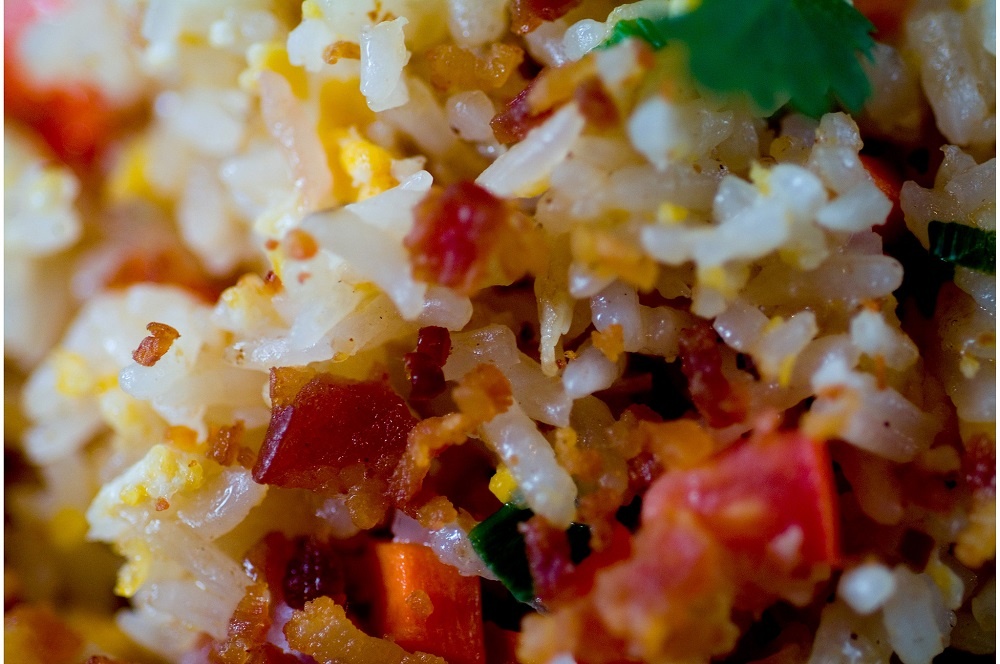The rapid shift from healthy choices to unhealthy food choices due to the lure of lower prices, ease of preparation, and more palate appeal has driven the upsurge of obesity, diabetes, cardiovascular diseases, and cancer. Sustainable food-centric interventions should be developed and strengthened to mitigate the growing health concerns with huge socio-economic implications.

.
The flourishing agri-food industry is producing a wider array of processed commodities at lower prices to consumers who have better purchasing power in urban areas. The global shift in western dietary patterns characterized by the increased consumption of refined carbohydrates, animal products such as meat and milk, together with higher intake of fats, oils, salt, and sugar were observed as these commodities were made more accessible and affordable to consumers.
 The rapid shift from healthy choices rich in nutritarian diet to unhealthy food choices preferred due to the lure of lower prices, ease of preparation, and more palate appeal has driven the upsurge of diet-related non-communicable diseases such as obesity, diabetes, cardiovascular diseases, and cancer. Accompanied by a sedentary lifestyle, the upsurge of non-communicable diseases, projected to remain a global health challenge for the coming decades.
The rapid shift from healthy choices rich in nutritarian diet to unhealthy food choices preferred due to the lure of lower prices, ease of preparation, and more palate appeal has driven the upsurge of diet-related non-communicable diseases such as obesity, diabetes, cardiovascular diseases, and cancer. Accompanied by a sedentary lifestyle, the upsurge of non-communicable diseases, projected to remain a global health challenge for the coming decades.
Sustainable food-centric interventions should be developed and strengthened to mitigate the growing health concerns with huge socio-economic implications.
Tweaking the rice grain
Milled white rice is typically starch-rich, serves as the major daily caloric source for a majority of the world population especially in Asia. Most rice varieties are of high glycemic index (GI), a food quality inferenced to contribute to the health problems surrounding high-calorie intake and dysregulated glucose metabolism. GI is a measure of glucose uptake upon digestion that leads to a sudden spike in blood glucose content.
Though quite a number of health beneficial claims exist for whole-grain cereals with increased dietary fiber content contributing to slower digestible property, brown rice consumption is not popular among rice consumers due to poor palatability, rancidity, and lack of shelf life for its storage in large amounts.
Therefore, rice-eating populations consume starchy milled rice, which is generally high GI in nature due to low-amylose rice varieties with lower content of resistant starch and trace amounts of dietary fiber to fulfill their daily caloric needs.
Promoting the consumption of highly processed food with high GI values further exacerbates the health problems caused by the twin effects of overconsumption and reduced energy expenditure.
Rice is served as the main daily caloric source for more than half of the population worldwide while consuming in excess contributes to increasing GI. Manipulation of GI through various approaches will significantly help in the fight against diabetes and related diseases.
Lower GI, higher value
Some popular rice varieties have shown a very diverse range of GI values between 24 and 160. This resulted due to intensive selection in breeding to breed high-quality rice with a preference to tweak texture by fixing low amylose in japonica and preferably intermediate amylose content in the indica varieties leading to rapid digestibility.
In northern China, japonica rice with very high GI in nature is being primarily consumed; while indica rice, whose GI values range from intermediate to high, is preferred in southern China and India. Many of the released rice varieties are high in GI with very few low GI lines such as Doongara marketed as a premium product, with a higher value fetched to farmers at USD 1,400 per metric ton, while milled non-broken white rice of high GI is sold at USD 350 per metric ton.
Breeding challenges
Until now limited progress has been made to mainstream the GI trait in breeding programs because of the difficulty in phenotyping of GI, as clinical settings is an expensive, low-throughput, and time-consuming procedure.
The primary requirement for developing low-GI varieties is to screen the diversity lines with accurate in vitro GI phenotyping technique to identify important donor lines, create high-density mapping populations, and define the genetics and development of diagnostic markers that can be deployed for genomic-assisted breeding.
Improving palatability remains a bigger challenge to ensure wider consumer acceptability. Addressing the double-sword effect of balancing the texture while attaining low GI attribute will be critical to take up mainstreaming efforts of GI and resistant starch traits in breeding programs. These outcomes will likely address the needs of rice consumers in combating diabetes by promoting the consumption of low-GI rice in the near future.
Mainstreaming of GI and resistant starch (a carbohydrate that resists digestion in the small intestine and ferments in the large intestine) in breeding programs has seen limited progress due to trade-off with yield penalty and the negative impact on cooking and textural properties. A cost-effective and high-throughput phenotyping technique to enable the selection of molecular markers and breeding lines of low GI with better palatability aided through genomic-assisted breeding can resolve the said limitation.
Aside from the manipulation of the intrinsic properties of rice, extrinsic modifications such as cooking, processing, and applications of dietary techniques can also impact GI. With better accessibility to low GI rice options in the market and their consequent incorporation in a well-balanced healthy diet, coupled with diet-based diversification approaches accounting density of nutrients is expected to ease the non-communicable disease burden of human health problems of the modern world and to address nutritional security in Asia.
Read the full study:
Jukanti AK, Pautong PA, Qiaoquan L, and Sreenivasulu N. (2020). Low glycemic index rice-a desired trait in starchy staples. Elsevier BV Trends in Food Science & Technology: Volume 106 p. 132-149.





